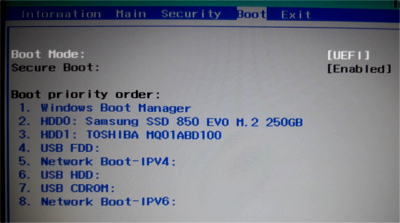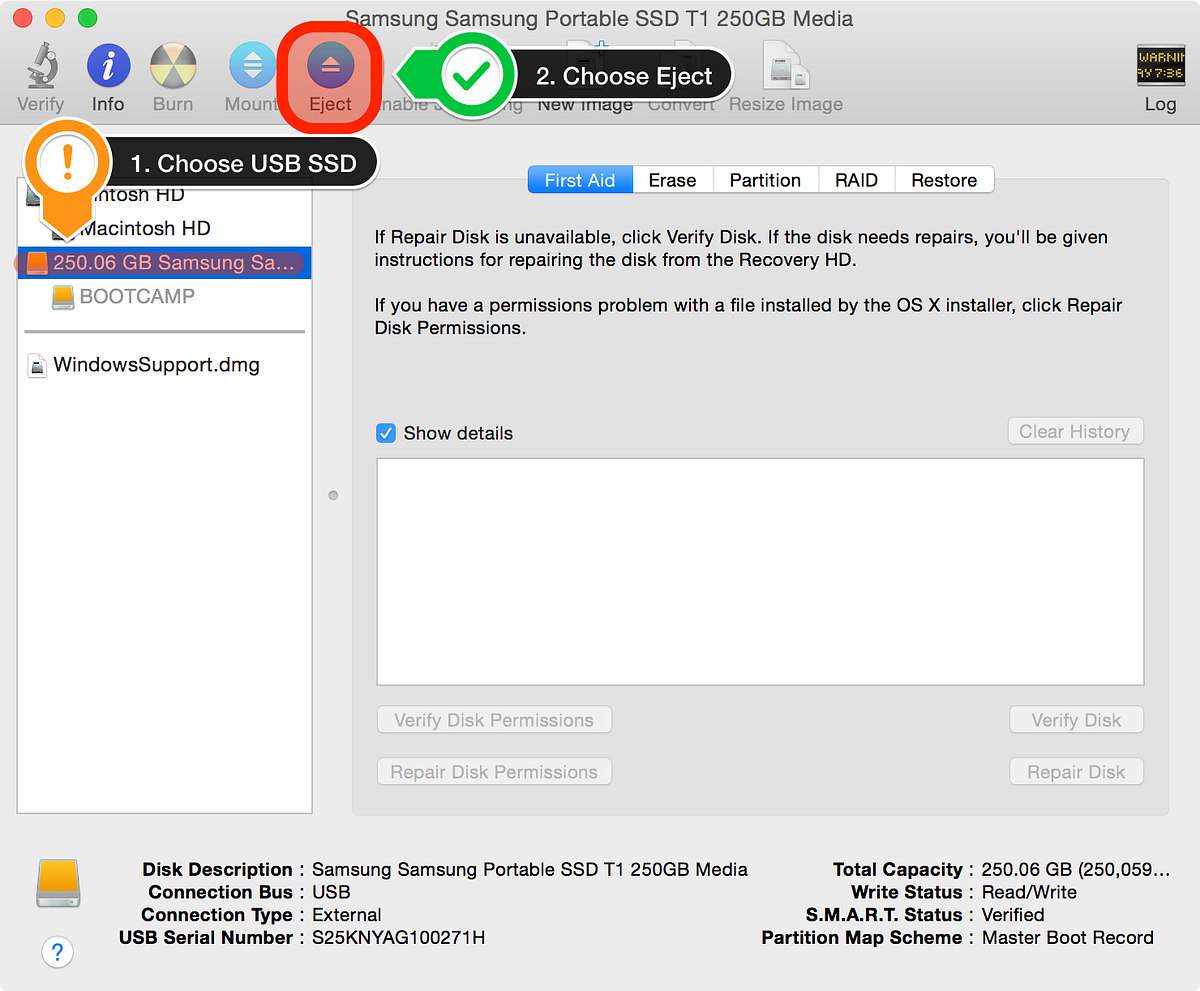Fresh Install Windows 10 On Ssd
If have finished the preparation work and going to clean install Windows 10 in the SSD drive, follow the steps below. Step 1: Shut down system and disconnect computer from the power cable. Step 2: Remove the old HDD from computer and connect the SSD to computer only.
Detail Steps to Clean Install Windows 10 on A New SSDAfter showing the way and, now in this article will show about how to install Windows 10 on a new SSD.Actually, the steps to are the same with the other versions of Windows, like Windows 7/8/8.1, Windows Server 2016/2012/2008/2003. Here only take Windows 10 as example to show you the detail steps.Tips:Before cleaning install Windows 10, we need to, back up the important data and save it to the safe place like external USB drive or the cloud.
Welcome to BleepingComputer, a free community where people like yourself come together to discuss and learn how to use their computers. Using the site is easy and fun. As a guest, you can browse and view the various discussions in the forums, but can not create a new topic or reply to an existing one unless you are logged in. Other benefits of registering an account are subscribing to topics and forums, creating a blog, and having no ads shown anywhere on the site.or read our to learn how to use this site. I'm pulling my hair out here.Windows 10 x64 OEM diskMotherboard Gigabyte GA-z170x-Gaming 7Drive 0 (C drive) Samsung SSD 850 EVO 500GBProblem: Can not install Windows 10 x64 OEM disk onto a clean Samsung SSD 850 EVO 500GB using a GPT partition.

I've tried it with two clean SSD's and both times Windows 10 was installed on a MBR partition.Prior to both installations I verified that in the bios 'WIndows 8/10 Features' was set to 'Windows 8/10' and verified that 'CSM Support' was set to 'Enabled'I inserted the disk and hit F12 to change the boot order. The SSD was detected and the DVD drive was detected twice. One as UEFI and one as not UEFI.I installed Windows 10 from the DVD drive that was detected as UEFI.My understanding that Windows 10 then should have formatted the SSD as GPT but it didn't.
It installed on a MBR partition. During the installation I wasn't presented with an option of HOW to format. I was just given the option to format.Questions.How do I get Windows 10 to install on a GPT partition on my SSD?Is there a way to change the partition from MBR to GPT?I now have 2 identical SSD's. How do I erase one of them?Thanks!KenB. I wondered about that.
But the CSM description in the manual is ambiguous. Enables UEFI CSM (Default)Disabled. Disables UEFI CSM and supports UEFI BIOS boot process only'Earlier I changed it to Disabled.
And when I hit F12 to select the boot order. No drives at all were detected.
Neither were any drives detected when I opened up the bios to verify.So. I'm still confused.Which partition manager would you recommend?Thanks!KenBEdited by KellyB56, 15 May 2016 - 09:42 PM. I would recommend you do a clean install of Windows 10 and not try to convert form MBR to GPT, and I would disable CSM.Download. This is free. Create a bootable CD from the iso by right clicking the iso on any Windows 7 or later computer by right clicking and selecting Burn Disk Image.Boot the Partition Wizard Disk and.Boot your Windows 10 disk.
Windows 10 Fresh Install On New Ssd
Does it detect the drive. If the drive is not detected then I would download Windows 10 to a bootable USB flash drive using the. Pick the iso option. Once the iso is downloaded use it with to create a bootable USB flash drive.
In the dropdown box select GPT partition scheme. Leave all boxes as checked.
Where FreeDos is listed in the dropdown box select iso image, click the icon and browse to the iso file. Backup any data on the flash drive. Attach the flash drive and tap F12 at boot. I am not sure if you have to add boot devices in the UEFI boot manager. I will need to look at the manual tomorrow. Can the Partition Wizard Bootable delete all partitions on Disk 0. The SSD that Windows 10 is currently installed on?
The website wasn't specific.As currently configured. 'Windows 8/10 Features' set to 'Windows 8/10'. And 'CSM Support' set to 'Enabled'. Both the SSD and DVD drives are detected.When I insert the Windows 10 DVD. The SSD is detected and the DVD drive is detected twice. Once with the UEFI string and once without the UEFI string.
If I disable CSM support. Absolutely NO drives are detected.As I understand it. As long as the drive containing the Windows 10 DVD and labeled with the UEFI string is selected as the boot device. Windows 10 should have been installed on a GPT partition.Evidently. That ain't happening'.
So I must be missing something.KenB. Your Windows 10 disk should have a key. Use that during the install.Edit: You can also do the same thing as Partition Wizard in regards to initializing as GPTWhen you reach the first install Screen where it asks for language press Shift + F10. This will bring up a command prompt.Type the following commandsdiskpartlist diskselect disk X Where X is the disk you wish to install Windows toclean This deletes all partitionsconvert GPT This initializes the disk as GPTexitexitContinue with the install.Edit: Edit: Using Imgburn you can create an iso image from your disk and use it with a USB flash drive for the install. I would use a read and write speed of no faster than 4X if possible.Edited by JohnC21, 16 May 2016 - 07:55 AM. I think I'm in business.
I managed to get Windows 10 installed on a GPT partitioned SSD.I basically used the method JohnC21 suggested.I used diskpart to clean the SSD of all partitions and partition it as GPT.I made and ISO image of my Windows 10 OEM CD using ImgBurn.Then I made a bootable USB stick using Rufus set to GPT and FAT32.I booted to the USB stick and attempted to install Windows 10. This is where problems started.
When the installation reached the 'Where do you want to install Windows' stage. Sometimes it showed 1 partition, sometimes 2, sometimes 4. I got a few 'can't install on a GPT partition' errors and a couple of 'partition order' errors. Seemed like it wanted to work but it was finicky. I had to use diskpart often to clean ALL partitions from the SSD and then verify they were really gone.
As there seemed to be left over remnants from prior attempts. And that may have been the cause of the partition order errors.What finally worked was booting to the USB stick and an SSD that was carefully verified to have no partitions and set to GPT. The 'Where do you want to install windows' pane showed only one unallocated partition. I clicked New.
Reinstall Windows 10 On New Ssd

How To Install Windows On New Ssd

Now 4 partitions were shown (Recovery, System, MSR reserved, Primary). It gave me the option to format the primary partition but since the SSD was already GPT I didn't do it. There were no partition order errors.The end result was Windows 10 x64 installed on an SSD with GPT partitions and a bios boot order which now listed 'Windows Boot Manager' as the first boot device.Thanks for you help everyone. I was about to throw in the towel.Now I can get some sleep!Thanks!KenB. When you reach the first install Screen where it asks for language press Shift + F10. This will bring up a command prompt.Type the following commandsdiskpartlist diskselect disk X Where X is the disk you wish to install Windows toclean This deletes all partitionsconvert GPT This initializes the disk as GPTexitexitCreated an account on here to thank you for the diskpart commands.
Even though it was already a GPT formatted disk, was having the exact same issues using the Windows Disk manager format tool. THANK YOU.edit: on another note, my system files are still on the old drive. Meaning I cant boot to my SSD without my old drive plugged in.
Bcdboot has failed me. Any experience there?Edited by Rootpseudo, 30 September 2016 - 08:18 PM.
You now have the correct number of partitions. Glad you got it sorted out and thanks for the update.Just a note.Using Clean as a diskpart command is supposed to delete the partition table which in effect is supposed to delete all partitions. Not sure why it did not work.Using Clean All will zero out the drive and give you a clean state.If I may add a couple of points: zeroing out an SSD is something to do sparingly; repeats may shorten lifespan. 'Clean All' takes about an hour per 320GB. Respect though!.